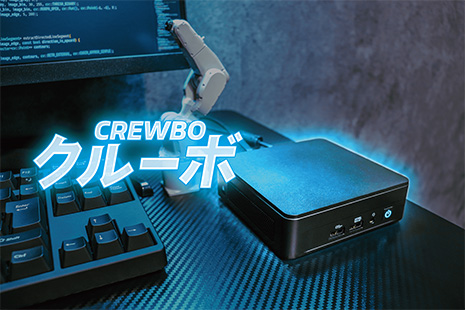VOL.194 JULY 2024
JAPANESE SMALL AND MEDIUM ENTERPRISES LEADING THE WORLD
Japanese Small and Medium Enterprises Spreading Their Wings to the World: Outstanding New Technologies Developed by One-of-a-Kind Companies and Their Potential

Emeritus Professor, University of Tokyo
Japan is home to many small and medium enterprises (SMEs) that, while small in scale, have been developing world-leading technologies. We interviewed ARAI Tamio, Emeritus Professor at the University of Tokyo — who also serves as selection committee chair for awards* that recognize outstanding technologies and products developed by such businesses — about the current state of Japanese SMEs, notable new technologies they have developed, and their potential.
Japan has many small and medium enterprises (SMEs)** that have been developing unique, original technologies and products. What are the actual technological development out of Japanese SMEs, as well as the socio-economic background that support this development?
In Japan, 99.7% of businesses are actually SMEs. They vary widely in scale as well as corporate structure. While some are very small with less than 20 employees, others have close to 300 employees and solid organizational structures. Also, while some companies are preliminary subcontractors to large corporations, others are creating unique, original technologies and products. With insufficient funds and human resources in research and development, compared to large corporations, they tended to experience challenges in developing new technologies in a timely manner. Therefore, not a few of them had to see them behind market changes.
However, in recent years, frameworks for open innovation*** have been established, providing easier access to external resources for SMEs in working on technologies and products that would be challenging for them to develop all on their own. These resources include universities, the National Institute of Technology, and public testing and research institutions. Also, taking approaches like crowdfunding**** to raise funds from a broad base of contributors offers the added benefit of making it possible to build networks of supporters as well. The environment for motivated businesses is improving more and more in Japan.
One-of-a-kind companies and startups are taking advantage of such frameworks to engage in ongoing research and development. This has enabled some of them to keep pace with current trends and successfully create unique, original technologies and products.
What are the characteristics unique to Japanese SMEs that enable them to develop outstanding technological?
First of all, where the ownership and management are often the same, they tend to have simpler organizational structures than large corporations. This makes it more likely that the top-level managements’ skills and ambition to grow are reflected in front-line operations, and if the top management has excellent qualities, they can be a major driving force for technological development.
Another characteristic of many of SMEs is that they have a presence in small-lot production and niche markets***** by identifying latent needs from a perspective unique to small and medium enterprises. In specialized fields, production and services tend to have inefficient, so large corporations tend to avoid them. In fields like this, harmoniously integrating diverse technologies by combining inventions, designs, and improvements specialized for the field can enable the creation of technologies with high degrees of perfection that satisfy market demands. We often see examples of one-of-a-kind companies have come out with new technologies in this way, working in limited fields. One more aspect of such companies is that, with the addition of their top-managements’ skills and ambition — a topic I mentioned earlier — they can be guided to success relatively easily.
Could you introduce a few examples of technologies developed by Japanese SMEs that would attract notice worldwide?
One that is attracting attention in the biotechnology field is the ‘On-chip Droplet Selector’ microorganism screening system developed by On-chip Biotechnologies Co., Ltd. Many production processes for medicinal, pharmaceutical, and food products require the use of microorganisms. Detecting microorganisms and cells that are beneficial to humans’ health or useful in countermeasures against climate change from among the vast number of unknown microorganisms in existence, however, requires a great deal of time and human resources. This microorganism screening system separate water droplets containing microorganisms and cells into individual microdroplets of a few tens of micrometers, encapsulate them, and culture and analyze them within those microdroplets. It can also further separate and dispense****** intended droplets one by one. This system can considerably shorten the time required to discover useful microorganisms.

Photo: On-chip Biotechnologies
An example from the semiconductor field is AiOnIc, a high-performance, low-power AI chip developed by ArchiTek Corporation. This semiconductor chip is specifically designed for processing in edge devices, which are types of devices such as smartphones, digital cameras, and IoT equipment used for collecting and transmitting data at points of contact between the Internet and the physical world. It achieves parallel processing performance surpassing that of GPUs******* and features low power consumption. AiOnIc is expected to make significant contributions in developing IoT networks, including applications in self-driving vehicles, hazard-sensing systems, and agricultural and livestock management, with chips installed in Internet-connected terminals.
A very interesting example in the robotics field is CREWBO, industrial robot control software developed by Chitose Robotics Inc. that enables robot-arm control in real time with high precision using cameras. The “visual feedback” control technology used in this product will contribute to increased productivity in manufacturing and logistics sites in the future as it comes to be used in robotics more. (see “High-Precision Robot Control Software without Need for Time-Consuming Manual Adjustments”)

Photo: Chitose Robotics

Photo: Chitose Robotics
Also, MITAKA KOHKI Co., Ltd. has received high acclaim for its Medical Imaging Projection System (MIPS), a high-precision optical measuring device the company jointly developed with i-PRO Co., Ltd. and the Kyoto University Faculty of Medicine. MIPS uses projection mapping technology to project surgical guidance information onto patients’ body surfaces or internal organs directly in real time. The system can provide increased surgical accuracy, operability, and safety during surgeries, and shortens operation time.

Photo: MITAKA KOHKI Co., Ltd.
A noteworthy case from the service sector is a monthly subscription-based clothing rental service offered by airCloset, Inc., taking a forward-looking approach to DX******** promotion for a company in the fashion industry. Primarily targeting working women, the service delivers several pieces of clothing selected by professional stylists each month, to subscribers’ homes, at reasonable rates starting at 7,800 yen per month. This year, the company has been actively adopting information technology (IT) as well, working with a university lab to jointly develop an interactive styling proposal system using general-purpose generative AI.

Photo: airCloset
If Japanese SMEs are to expand their business further with a global perspective, what are some challenges they will need to overcome and expectations of what they might achieve?
Expanding globally requires more than simply having a unique, original product. Acquiring relevant intellectual property rights is vital as well.
It is also said that Japanese SMEs are lagging behind in terms of internationalization and DX adoption. In our current global society, new fun and convenient systems can spread around the world in a matter of days, thanks to the spread of various social media that make full use of photos and videos. Considering what value one’s company’s well-developed technologies and products might provide to users and identifying markets where the company’s technologies and expertise are likely to be accepted can lead to further leaps forward.
Moreover, to make a successful international expansion, it is important to secure and cultivate necessary human resources. This is to be able to respond to demands for language abilities enabling discussions with other businesses and related public institutions from foreign countries, to establish frameworks for handling maintenance issues following the sales of products, and to properly understand partner countries’ business practices, for example. Additionally, strategic public relations can be realized by combining an evidence-based approach with IT utilization. It is important to ensure that selling points of the company’s products and services are clearly and accurately communicated to users abroad who have related needs.
What do you think about the potential of Japanese SMEs?
One-of-a-kind companies are working to create products that are the best in Japan, or the best in the world, by attempting to respond specifically to users’ needs. Such ambitious objectives generate enthusiasm and lead to successful outcomes. If Japanese SMEs with advanced technological abilities maintain such awareness, along with a perspective focused on how their technologies and products will be evaluated globally, I think they can expect to be able to make considerable expansions of their businesses overseas in the future.
While the social conditions differ from our current era, in the past, Japanese SMEs that made great strides on the world stage. Two that achieved worldwide name recognition are Sony and Honda, both established shortly after World War II, are among those that have achieved global recognition. Another example from the past approximately 40 years is UNIQLO (FAST RETAILING CO., LTD.). Each of these companies was motivated by the ambition and enthusiasm of its founders to develop products and services in demand. They not only have outstanding products to offer; they also have world-leading appeal in their service provision, including distribution and advertising.
Today, frameworks for providing support to SMEs expanding internationally have been established by organizations including SME SUPPORT JAPAN (Organization for Small & Medium Enterprises and Regional Innovation, Japan), JETRO (Japan External Trade Organization), and JICA (Japan International Cooperation Agency). Financial institutions are providing support as well, making barriers to overseas expansions lower than ever. In addition, with cross-border e-commerce becoming easier to engage in and other factors, there are now increasingly diverse methods of expanding internationally. Cross-border e-commerce (electronic trading of products across national borders) based in Japan enjoys a high degree of international credibility. This makes it possible to capture large shares of niche markets worldwide. It is important by taking approaches such as partnering with other countries. And also, obtaining support from financial institutions and support organizations are moving forward. Japanese SMEs have earned high levels of trust worldwide in terms of quality and delivery times. If they properly grasp the needs and demands of the world, they will be able to sell their products and services at high prices. I believe that Japanese SMEs have tremendous potential to expand their business internationally.
* The SME Excellent New Technology/New Product Awards. The awards are held annually by The Resona Foundation For Small And Medium Enterprise Promotion and the Nikkan Kogyo Shimbun, Ltd. with objectives of promoting technologies developed by SMEs and contributing to the development of Japanese industries. The awards were established in 1988. In April 2024, the 36th awards were held.
** Under Japanese law (Small and Medium-sized Enterprise Basic Act), SMEs are defined as companies in the manufacturing, construction, transportation, and other industries with total capital or investments of 300 million yen or less, or 300 or less regular employees. Similarly, in the service industry, SMEs are defined as companies with total capital or investments of 50 million yen or less, or 100 or less regular employees.
*** A method of creating innovative value in developing technologies and products, relying not only on the company’s own management resources and research and development, but utilizing knowledge and technology from external sources as well, including other companies, universities, and research institutions.
**** An approach in which a broad base of unspecified people offer donations or funding in small amounts through the Internet for certain organizations or projects.
***** Literally a “gap”; a small-scale in-between space in the market with special potential that large corporations tend to avoid.
****** To output certain volumes of sample liquids using a pipette or similar dropper.
******* Abbreviation of Graphics Processing Unit. A type of processor (semiconductor chip). Originally a device specifically designed to perform real-time image processing in applications such as computer gaming, providing high-speed processing, unlike CPUs. GPUs are indispensable particularly in the AI field.
******** Abbreviation of Digital Transformation. Refers to companies’ utilization of data and digital technology to transform their products, business, operations, etc. to gain or strengthen their competitive advantage. (Remarks: “Trans-” is often abbreviated as X)
By SAKURAI Yuko
Photo: airCloset; Chitose Robotics; MITAKA KOHKI Co., Ltd.; On-chip Biotechnologies
